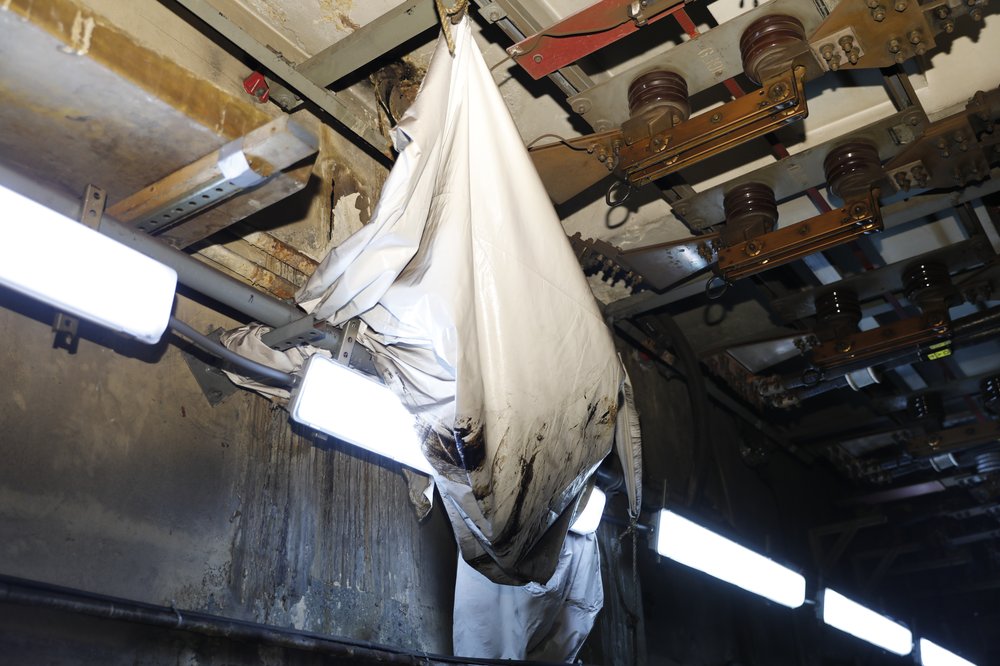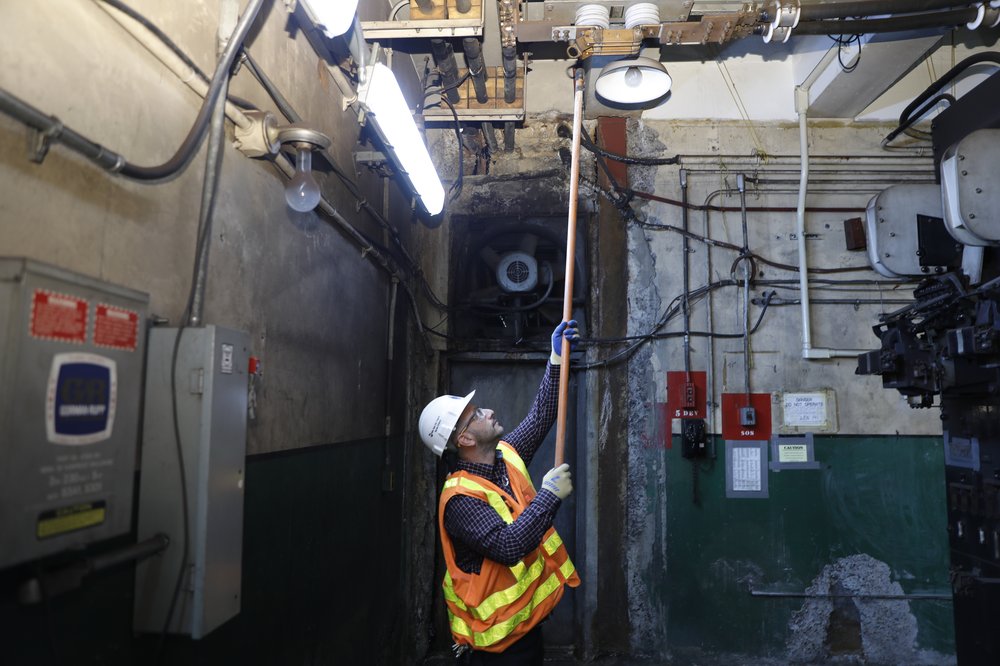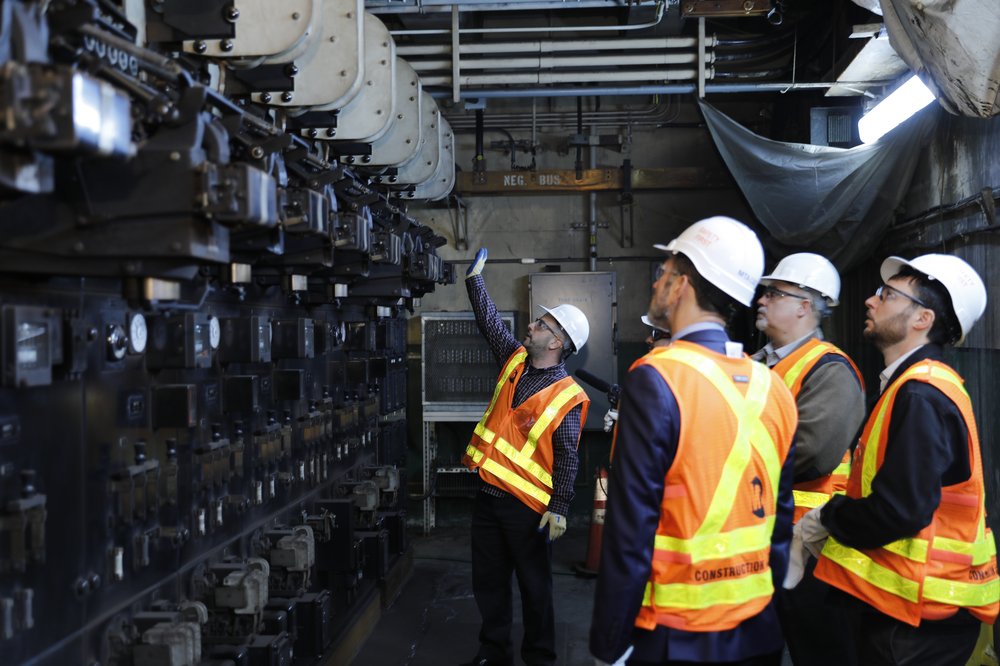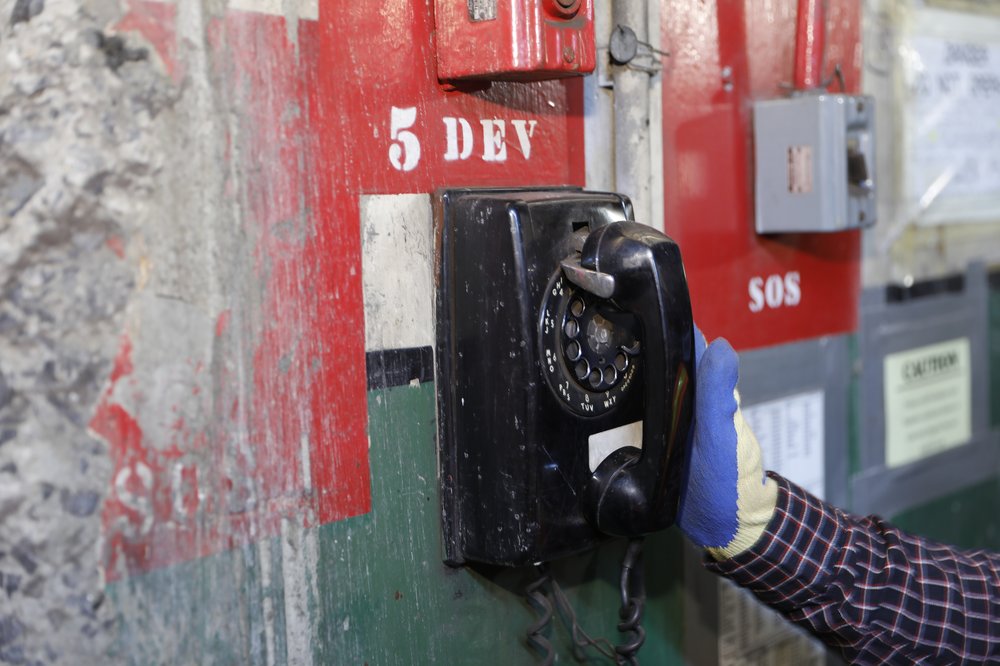The NYC subways' electrical equipment is so old it frequently explodes
Jan. 13, 2025, 6:01 a.m.
A Harlem substation is full of so much old equipment that MTA managers look for parts on eBay. A black rotary phone is the only line of communication to the outside world.

Each 2 train’s trip between Harlem and the Bronx is powered by a ramshackle electrical room maintained by an MTA manager who uses unorthodox tricks of the trade to keep its antiquated technology running.
When electrical components fail in the substation – a common occurrence, as evidenced by burn marks on the walls – MTA Chief Superintendent Joseph Daidone searches eBay for replacements. Many of the manufacturers that once made critical equipment there went out of business decades ago, so he looks for gear from decommissioned substations around the country that’s up for online auction.
If Daidone needs to reach the outside world from 40 feet below a Harlem sidewalk, he must use a rotary phone that was installed in 1969. Younger hires often need to be instructed on how to make a call because they’ve never seen one in person.
And when something really goes wrong and electricity from the tracks needs to be isolated, Daidone grabs a stick – a little longer than a broomstick – to reach a button on the ceiling.

“Trying to maintain power systems that were built at the beginning of the Nixon administration is just no way to run a subway system that's moving 4 [million] or 5 million riders a day. It just doesn't work,” said Daidone, 47.
Electricity is to the subways what gasoline is to automobiles, and the MTA’s tank is running on fumes. The power system is so strained that it can barely run daily subway service, much less make trains more frequent, according to subway managers.
According to the MTA’s own data, 77 out of 224 substations – including the one in Harlem – are in “poor or marginal condition” and in dire need of replacement due to decades of deferred maintenance. A minor failure at a substation can quickly delay 30 trains. A major breakdown can result in multiple substations becoming overloaded, expanding delays exponentially.
Riders saw the consequences of the MTA’s fragile electrical network on Dec. 11, when a Brooklyn substation exploded with such force that a door blew off its hinges and onto the tracks. The incident, which remains under investigation, halted service on the A, C, F and G lines for hours. Roughly 3,500 riders were trapped on trains in subway tunnels, some for more than two hours with no air conditioning.
- heading
- NYC's fragile subway system
- image
- image
- None
- caption
- body
This story is part of a Gothamist series examining the state of the subways as the MTA seeks $65 billion to maintain and upgrade its aging infrastructure. Reporters reviewed data, spoke with riders and visited parts of the subway system that are off-limits to the public. Read about the MTA's vulnerable electrical substations here. Here’s what we found:
- The MTA says it needs $3 billion to upgrade electrical infrastructure that powers the subways.
- 77 out of 224 electrical substations are in “poor and marginal condition,” according to the MTA.
- A substation in Harlem powering 2 trains runs on parts bought via eBay because the original manufacturers went out of business decades ago.
- A rotary phone from 1969 is the only line of communication at the dingy substation.
- A Downtown Brooklyn substation that exploded last month, causing massive delays, was 90 years old.
- The MTA’s plan for upgrades would require new taxes.
The MTA says it needs roughly $3 billion to upgrade electrical infrastructure, and warns that explosions like last month's will become more frequent as the equipment ages. The request is part of the MTA’s proposed $65 billion five-year capital plan that begins this year. But state legislative leaders have rejected the plan, citing high costs. The funding is one of the big-ticket items up for debate in the legislative session that began this month in Albany. Fulfilling the plan would almost certainly require Albany lawmakers to impose new taxes.
Gothamist reporters recently went on a tour of the underground substation near 141st Street, which involved descending into the dingy bunker via several sets of ladders.
“Right now we have 1969 technology for power and 2025 trains. They're not mixing together well,” said Daidone, a third-generation transit worker who oversees all of the MTA’s substations.
The volatility of the equipment at the substation was obvious. If the current spikes on subway tracks near the substation, an arc of electricity whips from a circuit breaker as it self-destructs, spraying molten copper on the walls.
That happens when someone throws a shopping cart on the tracks, Daidone said, adding that such occurrences aren't as rare as one might think. He pointed to burn marks behind nearly every one of the facility’s breakers.
As an extra safety measure, workers installed flame-retardant asbestos around most of the circuit breakers, creating a different type of hazard in the process.
“ You can't rely on something that's over 80 years old, 100 years old,” Daidone said.

MTA substations are located roughly every half-mile along subway lines and provide power to trains via the third rail, which runs parallel to all train tracks in the subway system. Electricity is transmitted to the trains through a piece of metal known as a “shoe,” which sticks out of either side of a train.
All that electricity makes the MTA one of Con Edison’s biggest customers in the region. The agency’s electric bill was roughly $544 million last year.
And while the utility company certainly appreciates the business, the MTA’s fragile equipment can strain power to the neighborhoods around the substations, risking power outages for people who aren’t even using the subway, said Patrick McHugh, the senior vice president of electric operations at Con Ed.
“The other portions of the grid have to pick up that load or supply that energy [when a substation fails] and therefore it puts constraints on other parts of the grid,” McHugh said. When an MTA substation goes down, it means other electrical work in the neighborhood will have to wait while the transit agency addresses the problem.
“If more and more of the equipment ages and we deal with more of these situations, it handcuffs us a bit, as well as other customers, when they need outages to do their work,” McHugh said.

At the Harlem substation, electricity is delivered through a transformer that’s been in constant use since 1969. Cold water pumped through its pipes prevents the nearly 60-year-old piece of equipment from overheating.
But Daidone worried the machine’s components may have rusted after so many decades of use.
“We're all hoping that the stuff down the inside is still in great condition,” he said. “What happened in 1969? We landed on the moon.”
Modern transformers use fans to stay cool, which is considered safer.
After passing through the transformer, the electricity is covered to direct current in another piece of vintage machinery called a rectifier. Daidone said the rectifier at the Harlem substation is inefficient, and doesn’t fully convert the current consistently. That can cause modern trains to shut down entirely as a safety measure, he said.
Transit officials say the strained electrical systems are a key reason why the MTA can’t add more subway service. More trains require more voltage — and the MTA’s rush hour service is at its limit in nearly every corner of the city.
“We use what we can just to get by, basically with the money that we have,” Daidone said.
Explosion at electrical substation caused subway meltdown for thousands, MTA says